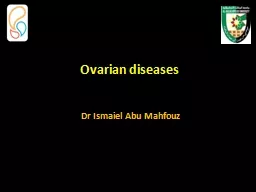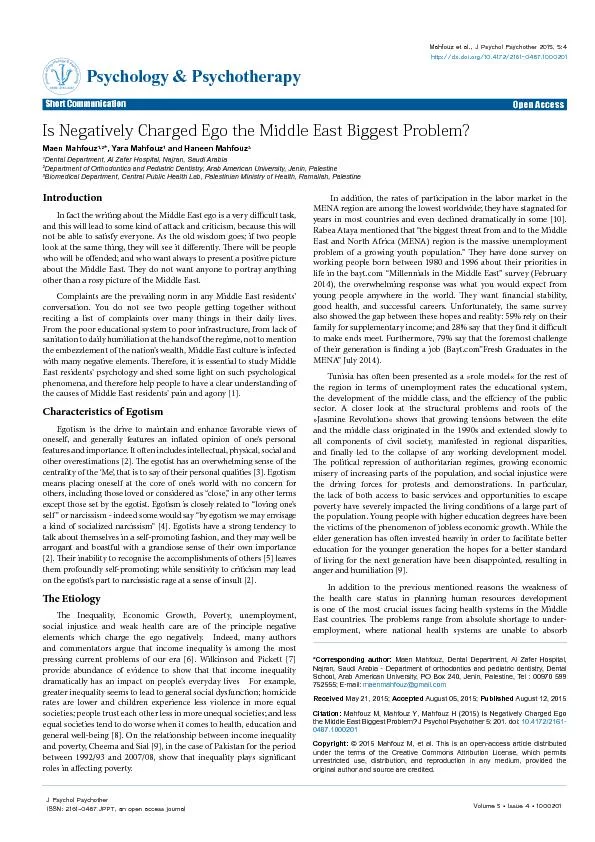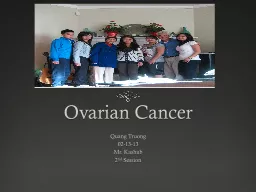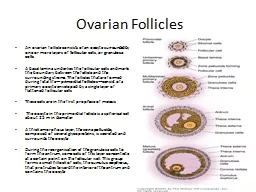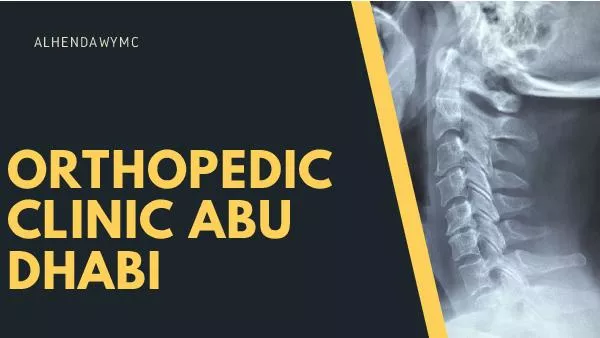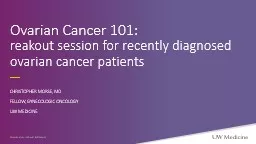PPT-Ovarian diseases Dr Ismaiel Abu Mahfouz
Author : davis | Published Date : 2022-06-11
Benign ovarian diseases Ovarian Cysts Prevalence 4 of women are admitted to hospital with an ovarian cyst complication by the age of 65 years 25 of adnexal torsions
Presentation Embed Code
Download Presentation
Download Presentation The PPT/PDF document "Ovarian diseases Dr Ismaiel Abu Mahfouz" is the property of its rightful owner. Permission is granted to download and print the materials on this website for personal, non-commercial use only, and to display it on your personal computer provided you do not modify the materials and that you retain all copyright notices contained in the materials. By downloading content from our website, you accept the terms of this agreement.
Ovarian diseases Dr Ismaiel Abu Mahfouz: Transcript
Benign ovarian diseases Ovarian Cysts Prevalence 4 of women are admitted to hospital with an ovarian cyst complication by the age of 65 years 25 of adnexal torsions occur in children. Abstract . id. : 1183. This . study aims . To quantify . and compare the sonographic ovarian reserve markers in the users and non users of oral . contraceptives.. To show that sonographic . ovarian . Talking point:. Genetics of ovarian cancer. 49F. Underwent risk-reduction surgery. Total hysterectomy and bilateral . salpingo. -oophorectomy. Significant family history . Sister passed away in her 40s due to breast cancer. Mahfouz (1911-2006). Born in 1911 to a Muslim family of modest means in an older district within Cairo. The milieu of his upbringing – . a densely populated, . traditional. , and . antique neighborhood of Cairo – forms the setting for most of his realist works.. . reserve. . before. . and. . after. . endometrioma. . surgery. M. Ćorić. ovarian. . reserve. . . endometrioma. . surgery. Ovarian. . reserve. . postponed. . childbearing. (> 35). 1,2
*, Yara Mahfouz
1
and Haneen Mahfouz
3
1
Dental Department, Al Zafer Hospital, Najran, Saudi Arabia
2
Department of Orthodontics and Pediatric Dentistry, Arab American University, Jenin, Palesti Quang Truong. 02-13-13. Mr. . Kashub. . 2. nd. Session. What is Ovarian Cancer?. Ovarian cancer is a cancerous growth arising from the ovary. .. The “silent killer”. . What are the types of ovarian cancer you may have?. oocyte. surrounded by one or more layers of . follicular. cells, or . granulosa. cells. A basal lamina underlies the follicular cells and marks the boundary between the follicle and the surrounding . ;. a . clinical trial. Dr s.Rouholamin. Dr f.behnamfar. Dr f.Ahmadpour. Introduction. Endometriosis: Chronic . pelvic pain and infertility . .. More affected organ: Ovary . Choice treatment: laparoscopic . Are you looking for orthopedic clinics in Abu Dhabi? Al Hendawy Medical Centre has a team of experienced orthopedic doctors in Abu Dhabi. TAGI-UNI Newsletter 2018
TAGI-UNI Newsletter 2018
Launch of 3 Edition of Talal Abu-Ghazaleh Accountancy
AMMAN - HE Dt. Tcncn Abu-Ihczcneh, Chairman of International Arab Society of Eetvi� Jihadi Bios ProjectAbu alLayth alLibiBy Kvin JacksonThe views expressed in this report are the authors and do not necessarily reflect those of the Combating Terrorism Center the US Military Academy th Call / Whatsapp 0557863654 We at Abu Dhabi Escort girl Service cater to any type of escort need from our clients. From the initial days of our Abu Dhabi Call Girls agency to today’s date, we have been successfully delivering escorts all over the state of Abu Dhabi. Our hi profile escort girls Abu Dhabi provide an all-round service at a budget-friendly rate. Most importantly, we can send Abu Dhabi call girl in a few minutes or an hour after you have taken our service. Any people- above age 21 can take our service to hire escort along with benefits. Members of our agency deliberately selected the best Indian call girls Abu Dhabi to lighten your mood and make your life little more interesting. Call us now 0557863654 we are available 24×7 Service and are longing to service you. Whatever your preference, we shall serve you fresh and serve you the best.
https://www.zuribia.com/abu-dhabi-model-escorts.html La Table Events is a skilled wedding planner in Abu Dhabi who will assist you in planning a stunning and elegant wedding at a suitable rate. Get in touch with us!! https://www.latableevents.ae/about-html Christopher Morse, MD. Fellow, Gynecologic oncology. UW MEDICINE. CONFIDENTIAL – DO NOT DISTRIBUTE. Overview. Introduction to ovarian cancer. Diagnosis and treatment. Surgery and chemotherapy. Surveillance.
Download Document
Here is the link to download the presentation.
"Ovarian diseases Dr Ismaiel Abu Mahfouz"The content belongs to its owner. You may download and print it for personal use, without modification, and keep all copyright notices. By downloading, you agree to these terms.
Related Documents

